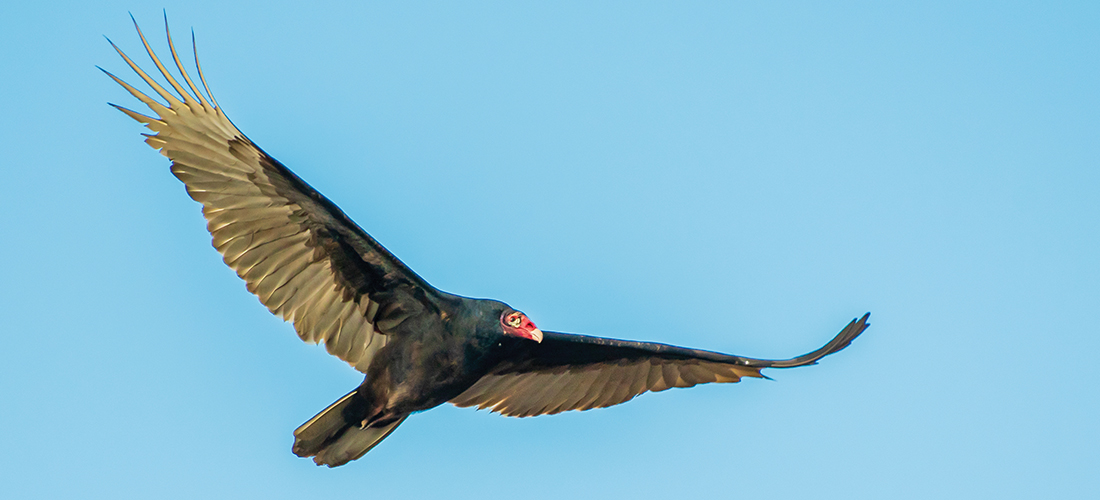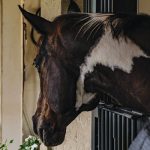
Cleanup on Aisle 2
The vulture’s role in the ecosystem
By Susan Campbell
Vultures: All of us have seen them. Maybe it’s been passing a group feasting on a recently killed animal by the side of the road. Or, more likely, you have spotted an individual soaring overhead on long, outstretched wings. These odd looking birds are too often misunderstood and even disliked — for nothing more than their appearance. In actuality, they are fascinating creatures that perform a vital role in the ecosystem: They are Mother Nature’s cleanup crew.
Often referred to generically as “buzzards,” vultures are part of a family of birds found worldwide with dozens of species, including South American condors. Here in North Carolina, we have both turkey and black vultures year-round. Individuals from farther north significantly boost flock numbers in the cooler months. These large black scavengers lack feathers on their heads: likely an adaptation to feeding almost exclusively on carcasses. Turkey vultures are the more common species from the mountains to the coast. Soaring in a dihedral (v-shaped profile) on long wings with silver linings, they have red heads and long tails for steering.
Black vultures, however, have gray heads and white patches on the under-wing as well as somewhat shorter wings and tails. As a result, they soar with a flatter profile and fly with snappier wing beats. This species has really expanded across the Piedmont in recent years, perhaps due to development, increased road building and the inevitable roadkill that results.
The winter brings vultures together in what can be impressive roosting aggregations that are known as “wakes.” These groups can build to 100 or more individuals of both species that will roost close together in a particular spot: night after night during the season. Late in the day, they will gather in mature trees with larger branches capable of holding significant weight. It is easy to spot them on tall snags or sitting side by side on communication towers. Given the human tendency toward neatness, there are fewer and fewer dead trees for the birds to utilize — so they have been forced to use manmade perches. They may choose rooftops and this can, believe it or not, include people’s houses.
It is not obvious as to why they choose the locations that they do each winter. Given the ease at which they roam in search of food, proximity of their next meal seems rarely a concern. They are capable of gliding and soaring many miles each day. No doubt they require a location with a substrate that warms readily in the morning sun to provide the updrafts they require to reach cruising altitude. Vultures do need a perch that is open enough to allow them to spread their wings on takeoff. This is likely why they are found roosting in more open environments.
For those living near a vulture roost site, be aware that the birds seldom use the same location for more than one season. This could be for reasons of cleanliness or to perhaps reduce the chances of predation — but we really do not know. Also, do not expect that the wake will persist beyond early spring. The group will break up and head off to their breeding grounds by late February or early March. Using prevailing southerly breezes, they will be carried back north in short order.
Although we do have small numbers of breeding vultures in the Piedmont and Sandhills of North Carolina, they are widely dispersed and are quite secretive during the nesting season. Unless they are on the wing, sniffing out (yes, they use their noses more than their eyes) their next meal, they may go completely overlooked. PS
Susan Campbell would love to receive your wildlife sightings and photos. She can be contacted at susan@ncaves.com.





